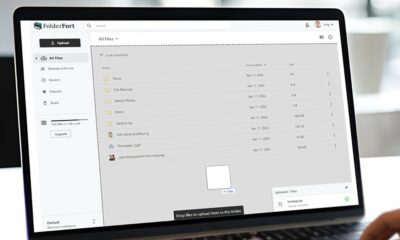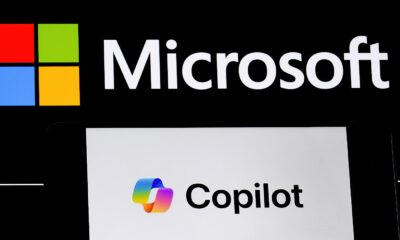MARKETING
Data from 500+ Instagram Marketers

In 2022, it’s clear that Instagram is no longer just a photo-sharing app.
Not only has Instagram become a thriving social media channel with all sorts of video, Story, and even live stream features, but it’s even evolving into a shopping platform that fuses e-commerce and social media together.
And, our recent survey of 580 Instagram marketers found that using the app’s shopping tools enables the highest ROI of any Instagram strategy.
But with a wide variety of shopping tools popping up in feed-based posts, Reels, Live video, Stories, Guides, and the dedicated Shop tab, it can be challenging to figure out where to start.
To help marketers and business professionals like you, let’s take a deep dive into Instagram’s shopping tools to find out:
Which Instagram Shopping Tools Perform Best?
Using Instagram shopping tools is the strategy with the highest ROI and also the strategy used most by Instagram marketers. Most importantly, it’s just getting started.
While just 37% currently use the app’s shopping tools, 94% of them will increase or maintain their investment this year. On top of that, 1 in 3 plan to use Instagram shopping tools for the first time this year.

Also, marketers who leverage Instagram’s shopping tools are 15% more likely to say their Instagram strategy was effective last year than those who don’t. So which tools perform best?
Of the shopping tools, Instagram Live Shopping and Instagram Shops have the highest ROI and are the most leveraged.

Additionally, the use of both live shopping and shops will grow significantly in 2022, with 55% planning to try Instagram Shops and 48% planning to use Instagram live Shopping for the first time.

Instagram Feed Post Shopping, Instagram Stories Shopping, and Instagram Guides Shopping are all used by over 1 in 3 marketers and also lead in terms of ROI.
Reels Shopping has the lowest use and ROI, however, 42% of Instagram marketers plan to use Reels Shopping this year, the 3rd highest of any Instagram shopping tool.
Should You Sell or Launch Products Exclusively Through Instagram Shopping?
Using Instagram Shopping tools is a powerful marketing opportunity, but should you also have an external website to sell your goods and services?
41% of Instagram marketers say most of the brands they work with use Instagram shopping tools exclusively and don’t have a separate website, while 59% use a mix of both.
83% of Instagram marketers say they have worked with a brand that launched a product exclusively on Instagram and 59% of them say launching exclusively on Instagram is better than launching elsewhere.

Launching a product exclusively to your Instagram audience can also be a great way to boost brand loyalty and reward your followers.
This is just one of the many benefits marketers are seeing from using Instagram’s shopping tools. Let’s take a look at what other benefits marketers are getting from social shopping.
The Biggest Benefits of Instagram’s Shopping Tools
Leveraging Instagram shopping tools comes with a wide range of benefits, most notably increased product discoverability, a simplified shopping experience for your customers, ease of partnering with influencers, and the ability to integrate your products into content, making it look more authentic.

I mentioned how Instagram is focused on helping creators monetize their content, and one way to accomplish all of the above is to leverage Shopping from Creators.
While not exactly new, this feature was initially rolled out only to a select few influencers in 2019. It took until March 2022 for Instagram to officially announce that it would be expanded to all users in the U.S.
Shopping from Creators allows influencers to tag your brand’s products directly in their posts, so users can find and purchase products without leaving Instagram. This combines all the benefits listed above, and excels at making partnering with creators easy and look authentic.
Despite all the benefits selling on Instagram offers, there are also challenges. Let’s dive into the top struggles marketers face with Instagram’s shopping tools.
The Biggest Challenges of Instagram Shopping Tools
The top two challenges marketers face with Instagram shopping tools seem to contradict each other – while 38% of those who use Instagram shopping tools struggle with making sales, 45% are having problems due to too many sales and supply chain issues.
Another 37% complain about selling fees, which are currently at 5% per shipment, with shipments under $8 racking up a flat fee of 40 cents. However, fees are being waved through June 30, 2022, to help small businesses recover from the pandemic.
36% of Instagram sellers also take issue with the fact that they don’t have full access to the shopping tools the app has to offer. As the app fully embraces social shopping in 2022, you can expect access to open up to more users.
Social Shopping Is The Future
There’s never been a better time to start selling on social media, and Instagram is the best place to do it.
If you’re ready to get started, take a look at our 2022 Instagram Marketing Report for a detailed breakdown of which strategies, features, and formats are most effective on the app. For a few examples of how brands leverage Instagram Shopping, check out this post or this detailed ultimate guide.
Curious about your overall Instagram strategy, beyond Shopping? Check out our Instagram Engagement Report for even more data.
Source link



















You must be logged in to post a comment Login